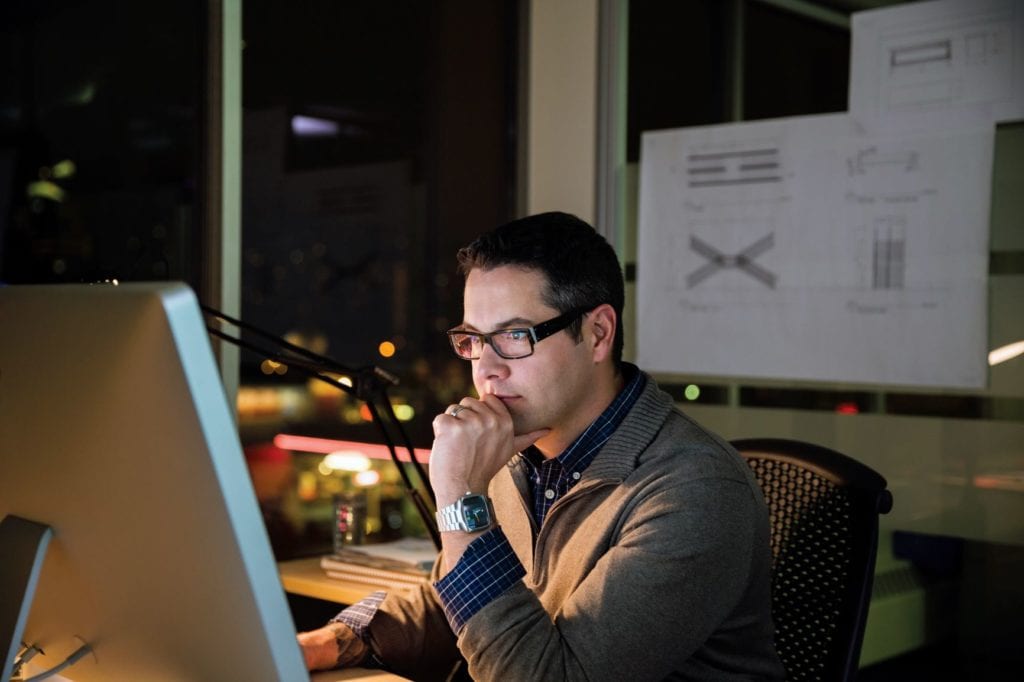No longer a 9-to-5 world
Sitting in hotel quarantine recently, it occurs to me that my work life these days looks a lot more like something out of punk rock group the Ramone’s, “It’s not my place in the 9 to 5 world,” than the more conventional picture painted in Dolly Parton’s hit song, “Working 9 to 5, what a way to make a living!”
My 16 years at Schneider Electric began in Sydney where the Australian company I worked for was acquired by Schneider back in 2006. As my career evolved, it took me around the world. But being plunged into the demands of a global role in a multinational environment like Schneider’s is a far cry from clocking in at 9 a.m. and clocking out again at 5 p.m. Working across 24 time zones, I found it increasingly challenging to juggle the round-the-clock demands while still trying to maintain a healthy work-life balance. It just wasn’t sitting well with my personal lifestyle preferences and body rhythm even though I had many colleagues, both in Schneider and elsewhere, who were able to successfully manage global careers from Australia.

Early bird vs night owl
My battle was primarily with my body clock and sleep schedule. Scientific studies have shown that these are more than just personal preferences but rather an innate and biological predisposition in our physical and mental health that can generally divide people into two types: early birds or night owls. I am a classic example of a morning person, most alert and energetic first thing in the day and known for my uncanny ability to sleep right through movies in the cinema, theatrical shows, and even ear-splittingly loud rock concerts at night.
Being based outside of Australia for the past nine years, including in Dubai, Paris, Boston, and now Hong Kong, has allowed me to test the impact of multiple time zones on my internal body clock, particularly regarding my metabolism and brain activity. I’ve discovered that it’s certainly possible to adapt and I’ve managed to do this successfully, shifting from 6:00 a.m. starts in Boston to late-night working in Hong Kong, for instance.

Having said that, though, my natural sleep preferences haven’t changed, and, in the end, I remain steadfastly a morning person. Stereotypes abound around these two types of people, i.e. what this means in terms of efficiency or effectiveness, but I don’t want to go there. These assumptions have already been well debunked, as outlined in Fast Company’s article, “Morning People Vs. Night Owls: 9 Insights Backed By Science.”1
From one HQ to a multi-hub model
Something else that’s evolved is our modus operandi. Schneider’s corporate headquarters may sit in Paris but the traditional, centralized role of one HQ in a company’s geography is not what it used to be. From my base in Hong Kong, I work alongside many members of Schneider’s executive committee, including our Chairman and CEO, Jean-Pascal Tricoire, who has been modelling this approach by residing in Hong Kong for over 10 years. He has long championed our multi-hub model to enable us to be the most truly ‘local’ global company. “I don’t believe very much in corporate offices,” he said many years ago. “I believe in leaders who are with their customers and their people.”
Schneider Electric has been operating this way for more than a decade now, splitting our leadership across our primary regional markets in Europe, Asia, and North America. With this model, employees and leaders are more empowered to make decisions that have local benefits, something which has become even more critical as we navigate the pandemic.
Having been based in each of these three key regions, I have experienced them firsthand and witnessed the advantages they deliver. This model empowers our people, supports decentralized decision-making close to our markets and customers, and is a strong enabler for collaboration and innovation.
From an HR perspective, it also helps us attract and retain the best talent from around the world to create highly diverse leadership teams with a true multi-market knowledge and culture. We are in a position to offer equal opportunities for everyone everywhere. I am a great example of this approach. I have been able to grow my career from local HR manager to global SVP, HR leader. This approach also aligns well with our company’s ambitions for sustainability in our global footprint.
Building a foundation of empowerment
To make the multi-hub model work, though, we first needed to ensure we had robust flexibility built into our work policy so, in 2017, we launched a Global Family Leave policy which enables all employees to manage their unique life and work requirements. This flexibility extended beyond a culture of smart working. It also incorporated:
- Workplace flexibility – the ability to work both form the office and home
- Working hours flexibility – the ability to accommodate life when needed
This policy deepened our culture of employee empowerment to manage work and life regardless of the time zone we are operating in, helping us to successfully negotiate the challenges of multiple time zones (for instance, allowing us to say no to a meeting that may not be ‘family friendly’).

As a senior global leader, I’m expected to be flexible about working inconvenient hours, at times starting very early or working late into the night as required, but by the same token, we are empowered to not do crazy working hours. This is critical for wellbeing and demonstrates a strong respect for us, as employees, to manage our time. I didn’t always get it right. At times, there were pangs of guilt if I stepped out in the middle of a workday or left the office at 4 p.m. (to get home in time for evening calls!). I guess I am still strongly conditioned in the old 9-to-5 mindset… In the past, there was also a certain stigma associated with working from home, driven by a fear that we would be less productive when not in the office. But then the world changed. The Covid-19 pandemic hit and the ‘new normal’ evolved…
I’ll talk more about working in the ‘new normal’ in my next blog.
- “Morning People Vs. Night Owls: 9 Insights Backed By Science,” Fast Company, May 19, 2015.


Conversation
Great article Deirdre and couldn’t agree more!
Great Blog Deirdre! Thank you for sharing your experience. Personally, I have improved my working hours over the past 12 months or so while maintaining high productivity and effectiveness. Thanks again for sharing.
Very well written, Deirdre. Through this blog, I now also know how naturally articulate you are.
I am there with you on being a “morning person”, but sleeping through movies and rock concerts? I haven’t mastered that art form yet. 🙂
Thanks for sharing your experience and insights Deirdre, let’s do new ways of working!
Great article Deirdre. Thanks for sharing your experience.